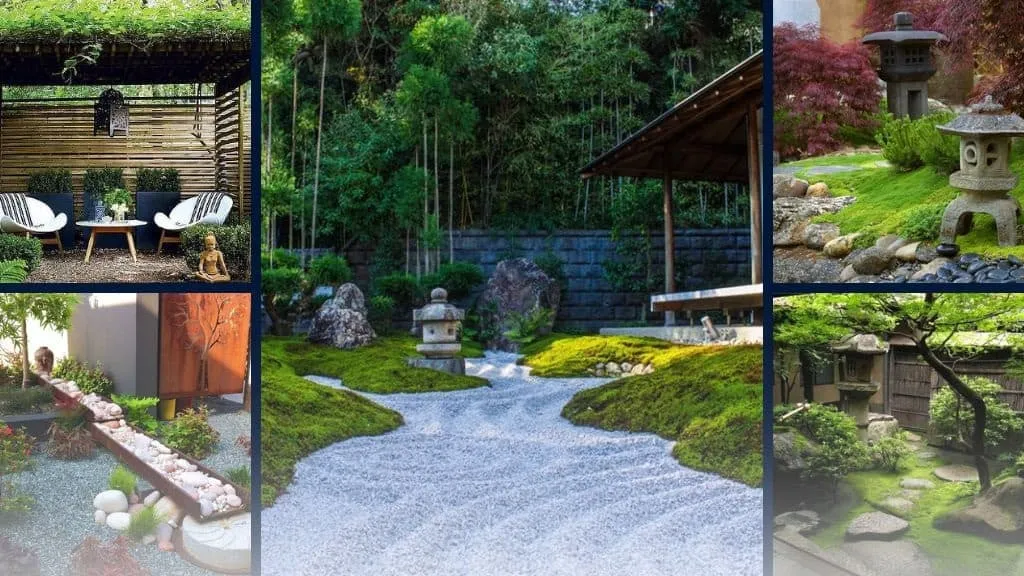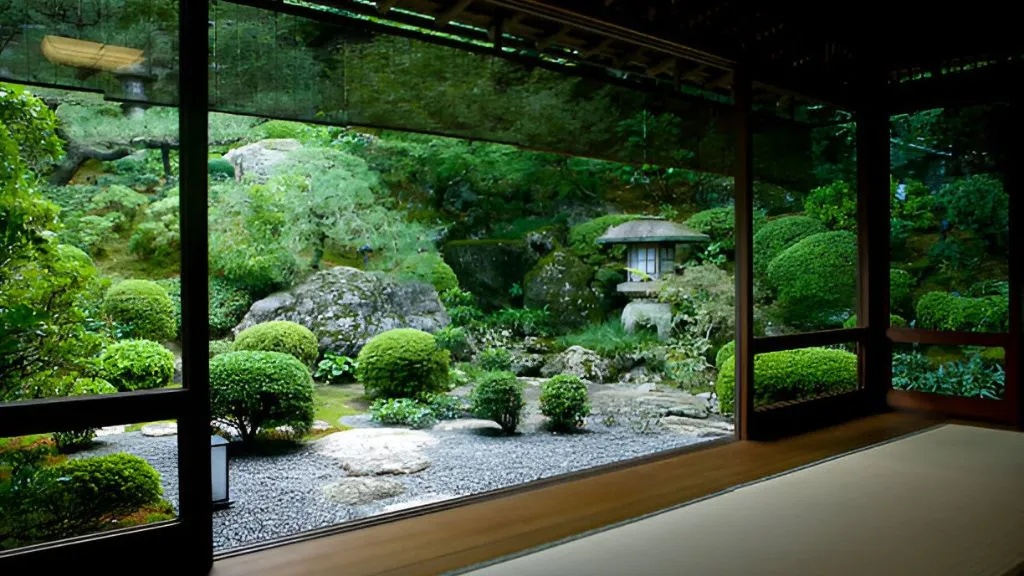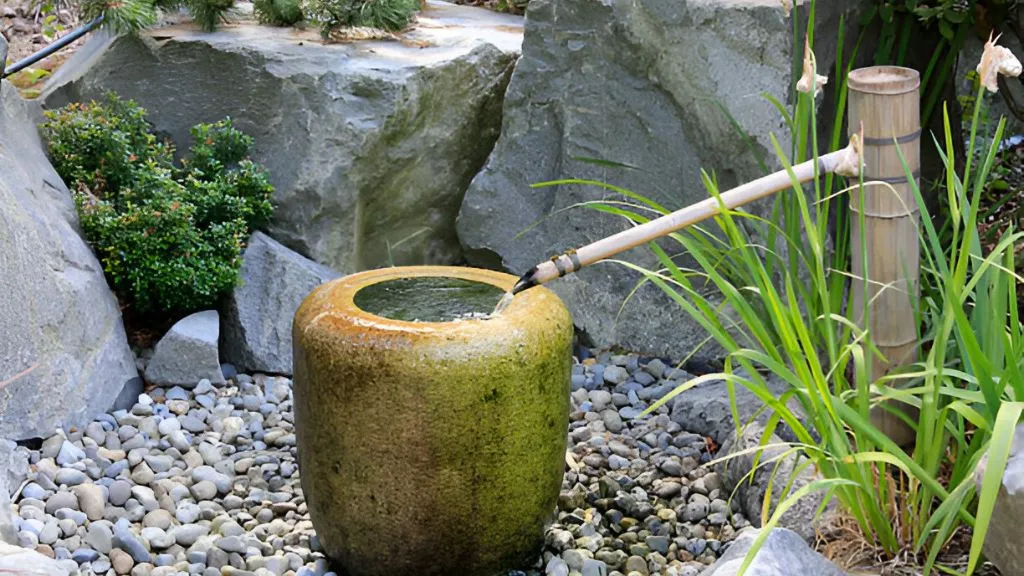After a long day at work, many people turn to their yards as a haven from the outside world. It is possible to develop this idea further into the creation of a dedicated space for quiet contemplation. Japanese Buddhist monks were the ones who first created Zen gardens as places to meditate. All kinds of landscapes can incorporate elements of Zen design.
Karesansui, or a minimalist dry landscape with few plants and no water, is what a traditional Zen garden looks like. It is made of natural rocks, gravel, sand, an. Stone lanterns, statues, and bridges are examples of man-made components in a Zen garden. The garden is appealing all year round because the emphasis is placed on hardscaping, so there is little seasonal change.
You can modify the fundamental principles of Zen gardening to suit your preferences and style. How to start designing your garden using Zen principles? Keep reading to find out!
How to Make a Zen Garden in 8 Simple Ways
1. Select a Site
Where in your backyard would a meditation space be most appropriate? What will its size be? To build a comfortable place to meditate, pick a flat, out-of-the-way corner or narrow side yard. Take measurements to get a sense of how the finished space will look.
2. Do Your Research
Visit local areas with Zen gardens to get ideas for how you want your space to look. Browse various books and of course the internet. Create a wish list or vision board of the elements you want to include in your Zen garden.
3. Use These Zen Principles as a Your Guide
7 guiding principles form the foundation of all Zen garden ideas:
- Austerity (Koko)
- Naturalness (Shinzen)
- Simplicity (Kanso)
- Asymmetry (Fukinsei)
- Unconventional (Seijaku)
- Magical (Datsuzoku)
- Mystery (Yugen)
- Stillness (Seijaku)
At least most of these principles must be reflected by your Zen garden.
4. Create a plan
To help you visualize your finished space, make a rough sketch before you begin implementation. You may talk to a professional landscape designer if you are designing an exclusive more complicated project. If you are using bigger rocks, it means you need to be a lot more aware of the location of your Zen garden and also a way to lift and set it into place.
5. Be Adaptable
There are numerous variations of a Zen design in which water and plants can play a more prominent role, even though authentic Zen gardens have few plants and no water features. So don’t be shy to try out other varying opportunities.
6. Make it Comfortable
Make your garden reflect your personality and what you want to achieve in a mediation zone by selecting aspects of Zen gardening that pique your interest. Design a place where you will enjoy spending time.
7. Think About Scale
Use materials that are proportional to the garden room and the rest of your yard. Small rocks can get lost in a more expansive landscape, whereas larger stones can easily overwhelm a small area.
8. Simplicity Wins, Guys!
What’s a Zen garden? A place to contemplate in a calmer zone, away from the hectic life we all live in. A Zen space should be simple and uncluttered. So to relax your mind, create a soothing environment by using muted colors.
What are Some Zen Garden Ideas (or Elements) You Can Include in Yours?
Each Zen component has significant symbolic importance. Water is represented by sand or gravel raked into patterns, while islands, mountains, animals, or natural elements like fire and earth are represented by larger rocks.
The emphasis on abstract ideas is meant to pique your imagination and let the mind wander, an essential part of meditation. A Zen garden ought to provide tranquility, privacy, and aesthetic appeal too. Include at least some of these essential characteristics when you design your Zen garden
1. Rocks
Because they symbolize the human desire for eternity as well as enduring elements found in nature, these are one of the most significant aspects of Japanese beliefs. A cohesive Zen garden design relies heavily on the selection and positioning of larger rocks. Bigger rocks, which go about as sculptural components, ought to be introduced first since they are the heaviest material and are a significant part of a typical Zen garden.
2. Gravel
Raked patterns of gravel has symbolic meaning, making them an essential component of Zen gardens. The gravel’s patterns and texture are brought to life by the low angle of the sun in the early and late parts of the day, creating a dynamic and captivating scene. Raking gravel is a learned skill that helps improve mental concentration and is a part of the meditative process.
While sand is a definitive option, gravel is more long-lasting and simpler to maintain. Use pea gravel, finely crushed gravel, or small, smooth pebbles that are simple to rake into patterns. Most of the time, light neutral colors like white, cream, or grey are used.
Gravel patterns represent a season or a mood:
- Wavy lines are reminiscent of a meandering stream.
- Lines around larger rocks mimic water ripples.
A design with a straight line can make you feel calm, lead you through the landscape, or make you feel like you’re in a frozen winter scene. After smoothing the gravel with a metal rake with fine teeth, use a rake with wide teeth to draw the pattern.
3. Fencing
Enclose the area with fencing, bamboo screening, lattice panels, formal hedging, or a wall to create a private garden room.
4. Erect a Statue
A statue can be a major focal point and serve as an inspiration for meditation. Zen gardens usually have Buddha dolls or Japanese lights. Install such lights or statues somewhere they are easily visible.
5. Pathway
Visitors can enter the garden through a pathway or through the gravel (gravels are easier to maintain). Pick materials that will diverge from the bigger shakes and rocks, for example, hazier-hued venturing stones. Consider how the path will affect your experience of the garden and then decide where it must be placed. Does it direct the eye throughout the garden or emphasize just the particular features? A straight path appears more formal, whereas a meandering path provides stops for lingering and observing along the way.
6. Seating
Zen gardens are intended to be viewed from a specific angle. Choose a spot where you can get the most out of the garden and set up a comfy chair or stone bench there.
7. Water
Even though water isn’t part of a traditional Zen garden, the sound of moving water can make the environment more peaceful and good for meditation. A streaming Asian-style wellspring or cascade will assist in overcoming the metropolitan commotion that we are all trying to escape.
8. Lighting
Lighting is a feature of home landscaping that is frequently overlooked. It adds beauty and lets people spend time outside in the evenings. Enlighten pathways, sculptures, or uplight trees in your Zen garden to make it seem more ethereal.
9. Plants
What’s a garden without plants, right? Although they are not typically used in Zen gardens, they can change the aura of the garden. Zen gardens typically employ low, creeping plants to complement rather than overwhelm the hardscaping. To evoke tranquility and harmony, the foliage should be in neutral shades of green while the flowers are either absent or very sparse. The best plants for a mini Zen garden include
- Dwarf conifers
- Bonsai
- Japanese maples
- Topiaries
- Azaleas
- Sedges
- Bamboo
- Creeping ground covers
- Mosses
- Ferns
How To Maintain a Zen Garden?
Now that you have a general picture of how your Zen garden should look, let’s find out more about maintaining it. An indoor Zen garden requires regular upkeep to look its best, despite its minimalist appearance. It is believed that taking care of the garden is an essential part of the meditation process. Win-win!
1. Rake Your Gravel and Leaves
Raking regularly will help keep the patterns clear and the gravel looking new. Pick or rake fallen leaves from the gravel regularly and remove any loose debris around the statues and stones to keep the garden looking neat.
2. Weed
Keep weeds out of the gravel and planting areas. This will be a more customary errand during summer when weeds are more productive, with next to zero weeding during the winters.
3. Prune
Pruning your plants is yet another activity to keep your Zen harden looking fab. Topiaries can be created by shearing or shaping shrubs. Remove spent flowers and cut out any growth or dead branches as necessary. Remove creeping groundcovers from areas with gravel.
The Bottom Line
Karesansui, or a minimalist dry landscape with few plants and no water, is a traditional Zen garden. Remember any kind of activity around your garden gives you a sense of purpose, keeps your mind activated without overwhelming it, and all of these are part of meditation too.
Zen Garden FAQs:
1. What are the three types of Zen gardens?
Traditional Zen gardens are generally categorized into three types:
1. Karesansui (dry gardens)
2. Tsukiyama (hill gardens)
3. Chaniwa gardens (tea gardens)
2. Do zen gardens help with anxiety?
Yes, zen gardens can alleviate anxiety by providing a tranquil setting. In a zen garden, rearranging the rocks regularly can help you focus on the present moment and clear your mind. Not to forget, the pruning, raking, and general maintenance work involved in its upkeep.
3. What is the purpose of the Zen garden?
The sole purpose of a Zen garden was to provide the monks with a place to meditate on the Buddha's teachings. The garden was built and maintained to encourage meditation. This is the kind of thing that you could utilize your own Zen garden for.









